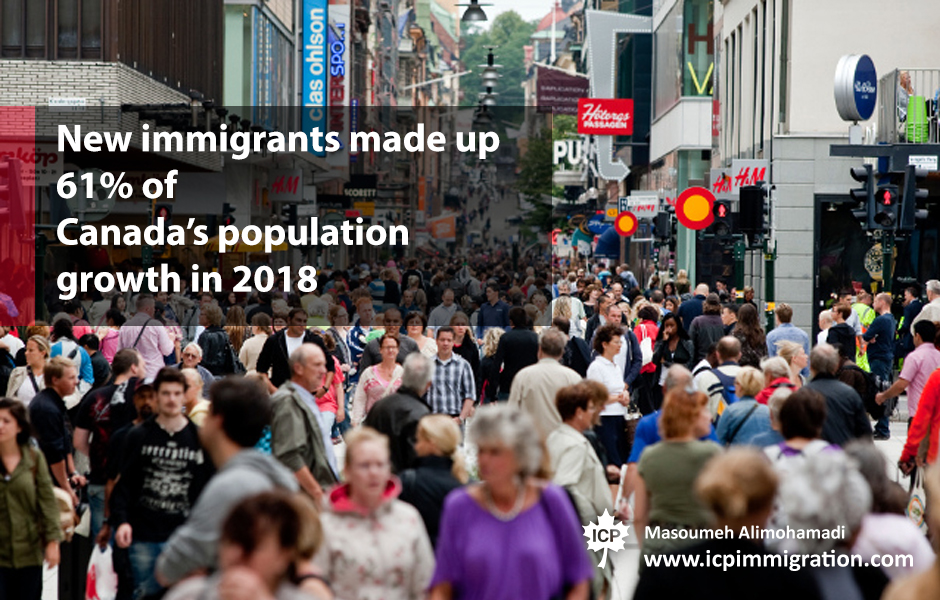Canada's population reached 37,314,442 on January 1, 2019
A new Statistics Canada report reveals how immigration to Canada continues to be the main driver of population growth, with a total increase of 321,065 new immigrants in 2018.
By the start of 2019, Canada’s population reached 37,314,442, following a record increase of new immigrants in the fourth quarter of 2018.
Over the course of 2018, Canada’s population grew by over half a million, or 528,421 people. International migration accounted for 80.5 per cent of the growth, representing a combined total of 425,245 new immigrants and temporary residents to the country.
Temporary residents in Canada are individuals who have been legally granted the right to live in Canada on a temporary basis on either a visit, work, student permit or any other temporary status granted by Immigration, Refugees and Citizenship Canada (IRCC).
The reported immigration numbers surpass natural growth numbers (births minus deaths) for the year, which is recorded at 103,176.
The Statistics Canada report indicates that the population growth bump is unusual for a fourth quarter of a year, as this is typically when population growth slows down due to seasonal patterns.

The graph above shows that international migration has been a major driver of population growth. This could be due to Government of Canada initiatives that were introduced in recent years to improve its now widely-acclaimed immigration system.
Canada issued a record-breaking 89,800 Invitations to Apply (ITAs) for Canadian permanent residence to eligible candidates through the Express Entry system in 2018.
In the fourth quarter of 2018, IRCC released its three-year immigration levels plan for 2019 to 2021.
Economic immigration is a central component of that plan, which has an admissions target of 330,800 new permanent residents for this year.
This number grows annually and is set at 350,000 by 2021 — nearly one per cent of Canada’s population.




